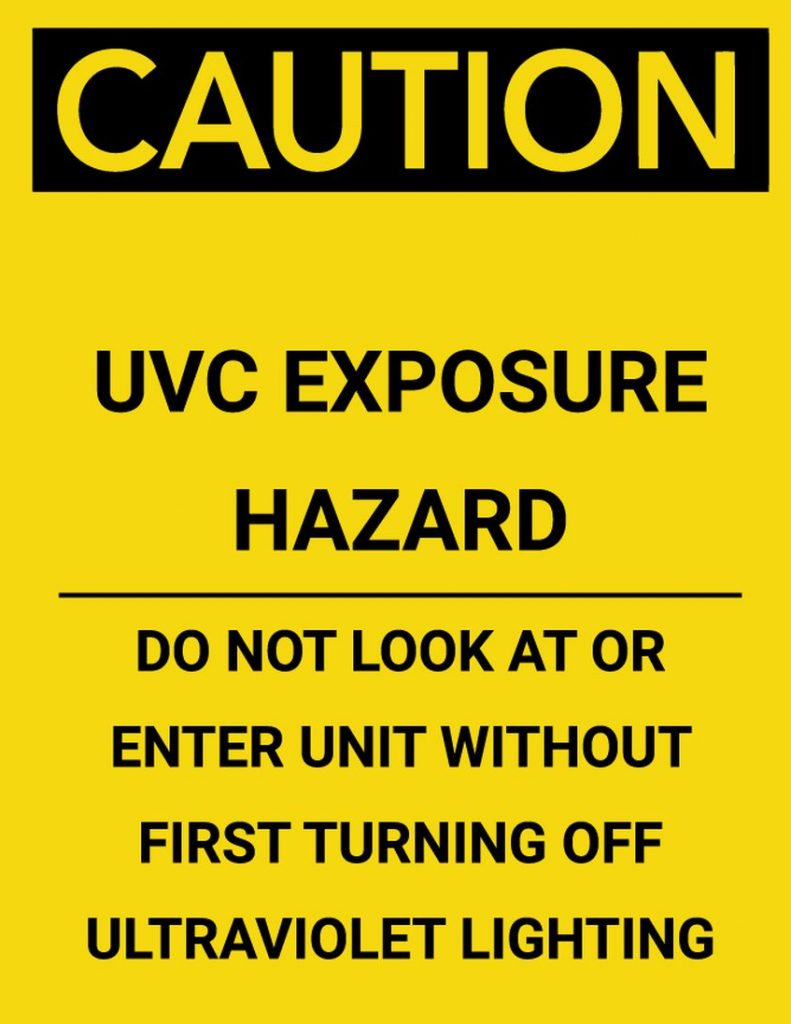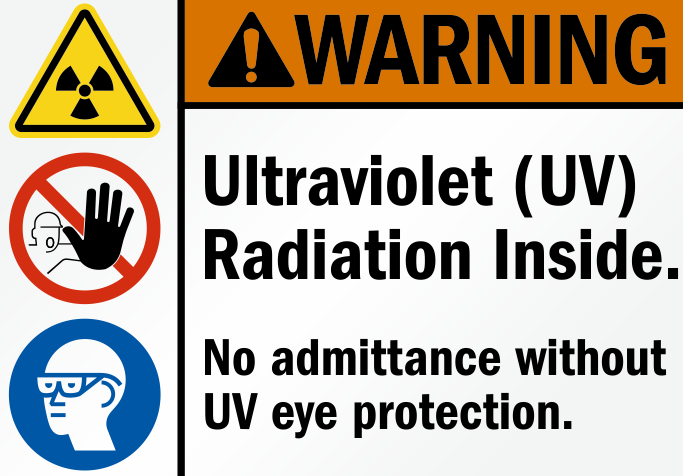UVC Surface Disinfection
The Sun produces UVA and UVB ultraviolet light that reaches the Earth’s surface, but UVC is blocked by our atmosphere. UVC can only be produced by specialized lamps.
UVC Sterilization Principle
High-energy UVC damages RNA and DNA in all types of pathogens including viruses, bacteria and fungi. This prevents them from reproducing and reduces the risk of infection.

Utilizing the appropriate wavelength of ultraviolet light can destroy the molecular structure of DNA or RNA in microbial cells, causing growth cell death or regenerative cell death, achieving the effect of sterilization.
Ultraviolet technology is a non-chemical approach to disinfection. Nothing is added in this method of disinfection, which makes this process simple, inexpensive and requires very low maintenance. However, surface areas to be disinfected, need to be dust, dirt or soil free. UVC cannot penetrate into dust or soil. Areas that are covered with dust will not be disinfected totally using UVC alone. Vacuum or wipe or clean the dust or dirt before UVC disinfection is encouraged.
Ultraviolet purifiers utilize germicidal lamps that are designed and calculated to produce a certain dosage of ultraviolet (UVC range from 200 nm to 257 nm)
Ultraviolet light or ultraviolet radiation is part of the light spectrum and as a shorter wavelength than visible light. Other invisible parts of the light spectrum include infrared and X-rays.
99.99% of most pathogens can be neutralized with a UVC dose of 50mJ/cm2. This target is often used for hospital disinfection and is appropriate for other applications as well.
UV light is divided into UVA, UVB, and UVC. UVC light has a wavelength of 100 to 300 nm, but the 240-280 nm range is particularly is well absorbed by microorganisms.

Question ? : Can UVB or UVA radiation inactivate the SARS-CoV-2 coronavirus?
UVB and UVA radiation is expected to be LESS EFFECTIVE than UVC radiation at inactivating the SARS-CoV-2 coronavirus.
UVB: There is some evidence that UVB radiation is effective at inactivating other SARS viruses (not SARS-CoV-2). However, it is less effective than UVC at doing so and is more hazardous to humans than UVC radiation because UVB radiation can penetrate deeper into the skin and eye. UVB is known to cause DNA damage and is a risk factor in developing skin cancer and cataracts.
UVA: UVA radiation is less hazardous than UVB radiation but is also significantly (approximately 1000 times) less effective than either UVB or UVC radiation at inactivating other SARS viruses. UVA is also implicated in skin aging and risk of skin cancer.
Question ? : Are all lamps that produce UVC radiation the same?
Not all UVC lamps are the same. Lamps may emit very specific UVC wavelengths (like 254 nm or 222 nm), or they may emit a broad range of UV wavelengths. Some lamps also emit visible and infrared radiation. The wavelengths emitted by the lamp may affect the lamp’s effectiveness at inactivating a virus and may impact the health and safety risks associated with the lamp. Some lamps emit multiple types of wavelengths. Testing of the lamp can determine whether, and how much, other wavelengths the lamp puts out.
DISINFECTING EFFECT OF UVC GERMICIDAL LAMP
The energy of the UVC light damages the DNA of microorganisms and viruses and prevents them from multiplying. Professional disinfection bulbs mainly produce UVC light with a wavelength of 254 nm, which has the most powerful disinfecting effect.
Study has shown that 99.9% of coronaviruses can be killed when exposed to UVC light.
UVC radiation is a known disinfectant for air, water, and nonporous surfaces. UVC radiation has effectively been used for decades to reduce the spread of bacteria, such as tuberculosis. For this reason, UVC lamps are often called “germicidal” lamps.
In addition to understanding whether UVC radiation is effective at inactivating a particular virus, there are also limitations to how effective UVC radiation can be at inactivating viruses, generally.
UVC is invisible, but UVC bulbs emit a blue light as a by-product that has no disinfecting effect. It serves a practical function, letting you know that the bulb is switched on. There are many FAKE UVC devices in the market which only emit Blue light or Purple Light BUT, NO UVC light.
UVC radiation is dangerous to skin and eyes, so it’s best to avoid exposure. All installations should be shielded and proper protective equipment such as UVC goggles, face masks and skin covering should be used during testing and maintenance.
Effect on skin:
Because UVC does not have an infrared component like sunlight, you won’t feel its effects, but it can cause redness and a burning sensation on the skin fairly quickly.
Effect on the eyes:
UVC does not penetrate into the eye, but corneal irritation can occur a few hours after exposure. It causes a painful, burning sensation that’s also known as “welder’s eye” or “snow blindness”.


For more information on UVGI, UV Germicidal lamps or UV disinfection system, there is an interesting article on Today news .. click link to read. https://www.todayonline.com/singapore/experts-warn-consumers-beware-risks-when-buying-uv-sterilisers-personal-and-home-use

